A. Line Model
Tetrahedron out of chopsticks, bound by red rubber bands.
B. Planar Model
Research
I was initially obsessed with planning execution. I wanted to systematically plan how many edges, lines and planes to imply/create in order to suggest the form of a tetrahedron in the most interesting way. I studied the tetrahedron structure thoroughly and came up with different permutations of the number of planes required to suggest x number of edges/lines/planes.

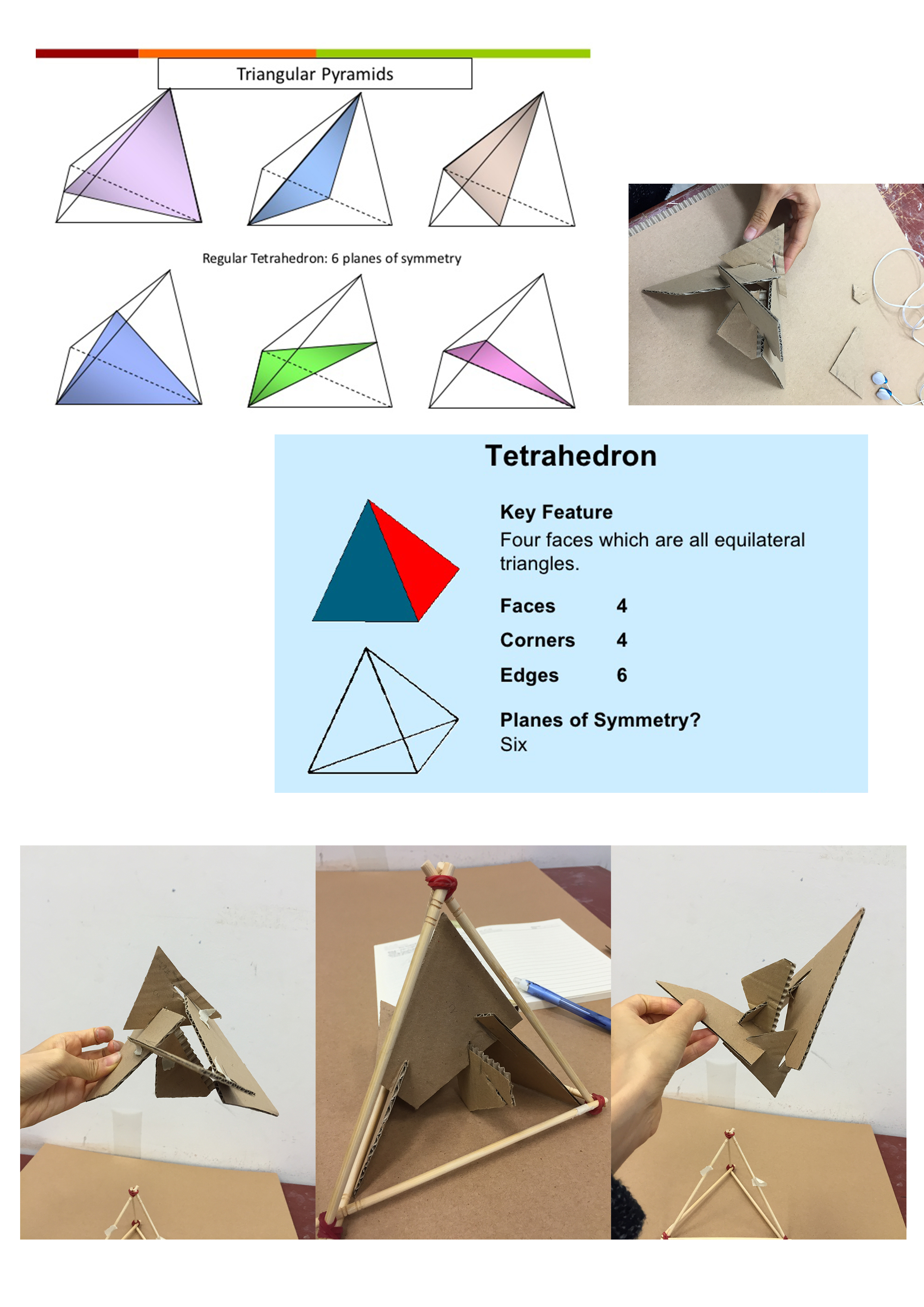 Development
Development
When it got down to making the structure though, it was harder than I thought to follow my intended permutation. I found that just experimenting with random cut-outs and not being consciously fixated on doing things a certain way was more productive and created more interesting forms.
Final
My final planar model is therefore one that is more of a result of experimentation than planning/execution of a preconceived idea/vision. My experimentation was however guided by considerations to variations in size, shape and orientation of the planes so as to create dimensional interest while still bearing semblance to the tetrahedron form. The entire process was a tedious one with continuous trial-and-error.

C. Final Model
Research
On the idea of “breaking away”, I considered shifting planes as well as unfolding skeletal structures, but found myself drawn to working with lines of the skeletal structure more. I did not reference any particular artist or style specifically, but the stretching quality of the form in Barbara Hepworth’s “Stringed Figure” did influence the loose visual I wanted for my final model– particularly its use of lines that joined the diverging planes (which I perceived to be “tendons”/ inner strings holding the initial form together).
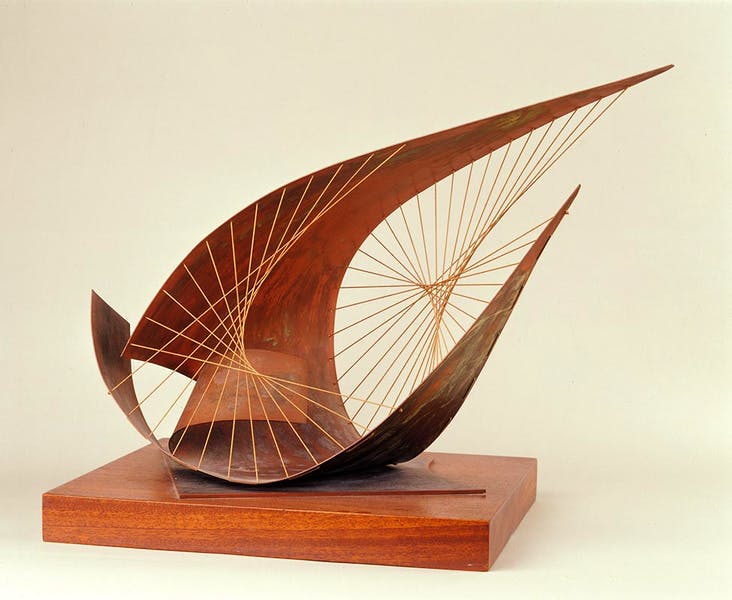
Development
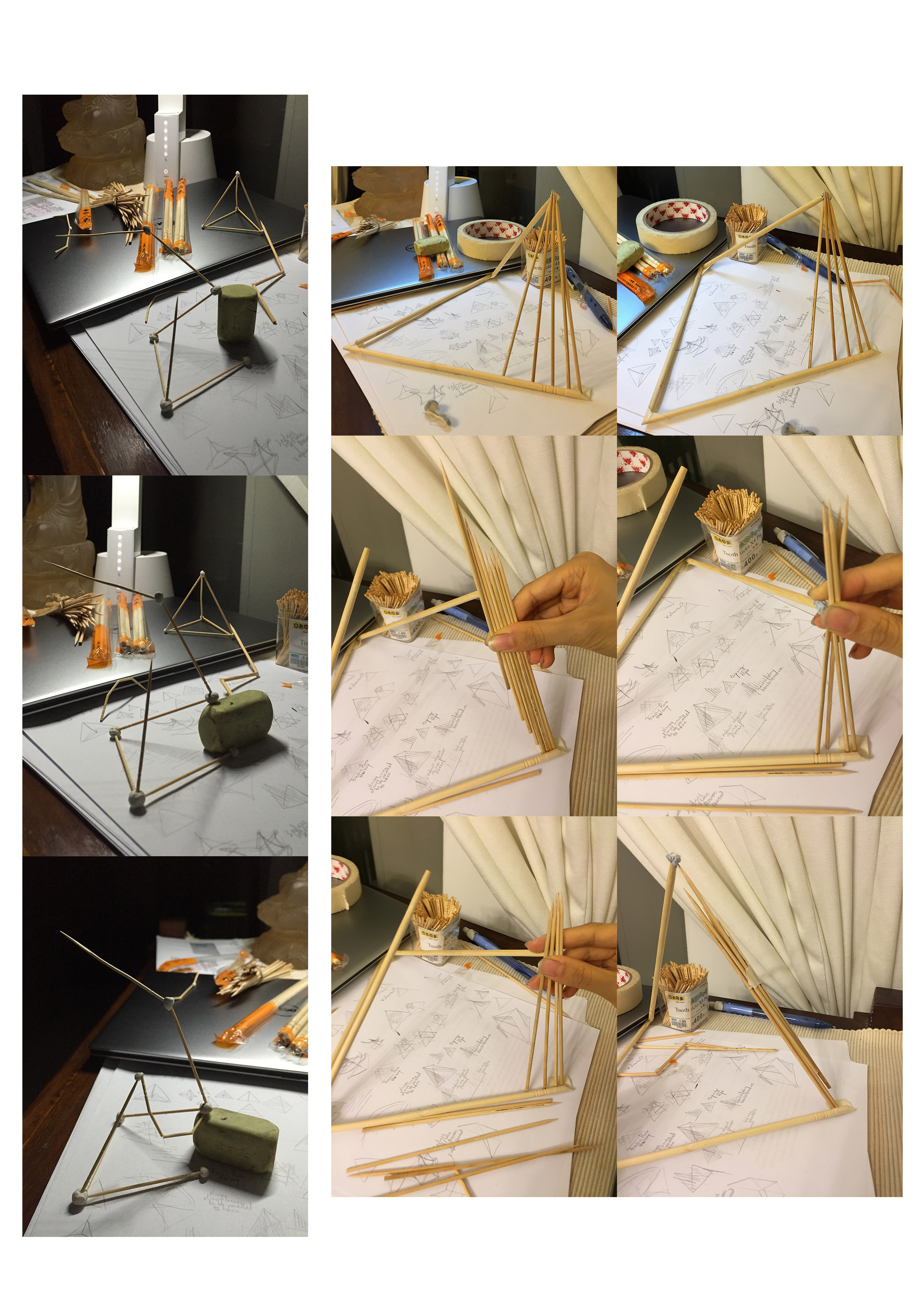
I wanted to start from the skeletal structure instead of the planar one and began with the idea of having the lines detach from their original joints and slowly unravel. I brainstormed and experimented with the different ways I might be able to do this: one of the ideas was to have the lines come apart such that they slowly detached to form a continuous snaking structure that winded upwards to show the dynamism and upward motion of “breaking away”. However I decided in the end to limit the detaching/disjoining effect to just the three lines that converge at the tip of the tetrahedron, and to retain the triangular shape of the base structure (in the snaking upwards idea the base breaks away as well) for a stronger semblance to the tetrahedron form from that particular side. I experimented with the number of lines out of the three to detach as well such that I had an interesting form that was stable enough to stand alone at the same time– 2 out of 3 / 3 out of 3 detached from the base. The final idea went for 2 out of 3, prioritising the stability concern, and working within that restriction to find the most interesting form it allowed.
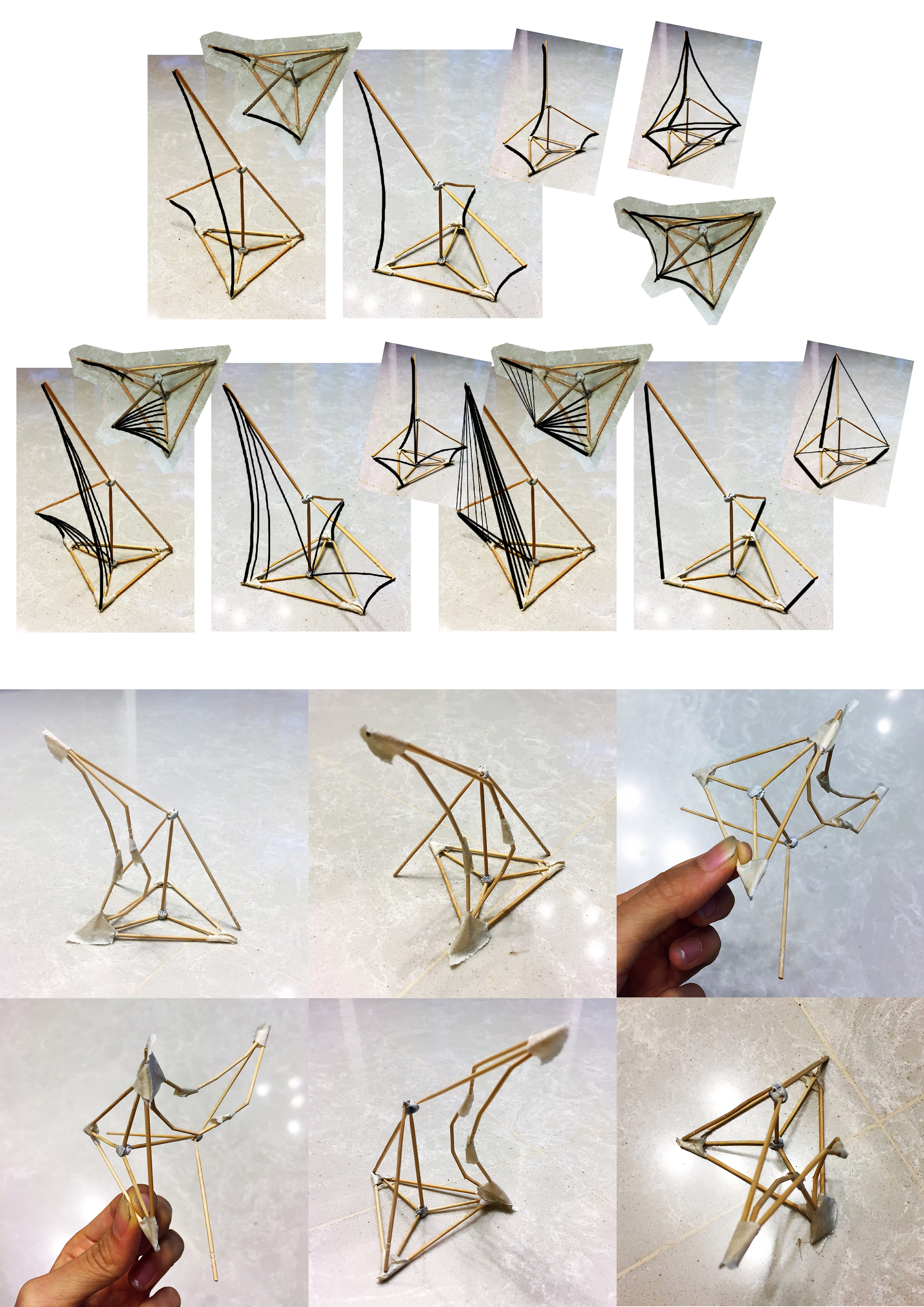
For this idea, the visual I had in mind was to have the three sticks lift themselves upwards from the base joints and be tilted at different angles so that from the top and sides they looked sort of like an expanded structure somewhat like a exploding flower. I also wanted to have the additional material be used to join the lines where they detached from their original joints on the base to illustrate the tension and pulling away motion/path that they had taken. For this, I envisioned the material to form curves to create a sort of stretching effect, rather than straight lines which would come across more like supporting rigid structures or extensions part of the structure itself. Materials I considered to form these curves were wires and strings. However, I realised these materials were unable to support the weight of the lifted chopsticks and the only material on my hands that could do this was satay sticks (chosen also because of their complementary colour and similar appearance with the chopsticks that formed the skeletal frame).
With satay sticks however, the structures that I could make/ it alluded to were very linear and straight, in contrast to the stretched curves I wanted. I started to explore the material and see if rigid straight sticks could somehow form curves by bending/breaking them. To my surprise the angles at which they were broken held quite well and as supporting structures they were quite durable and did not snap at the joints I broke them. Yet at the same time there was some degree of flexibility that allowed the sticks to come across as “soft bendable” structures at the joints. I also discovered that the splinters that resulted at the joints I broke them were to my liking and created a “broken” quality that fit the idea of the structure breaking apart. I started to form “curves” with broken satay sticks, joining them together with masking tape in my prototype.
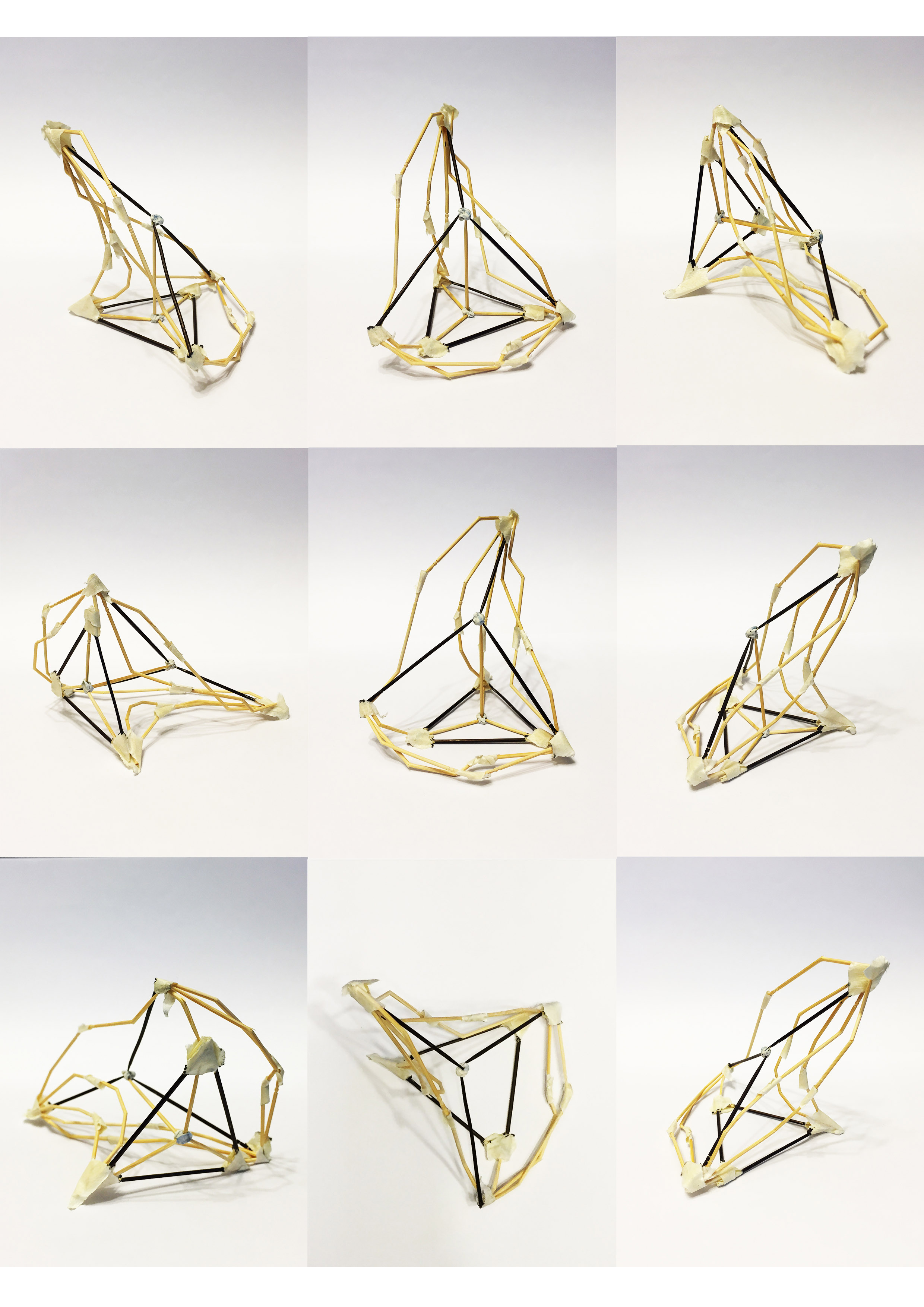
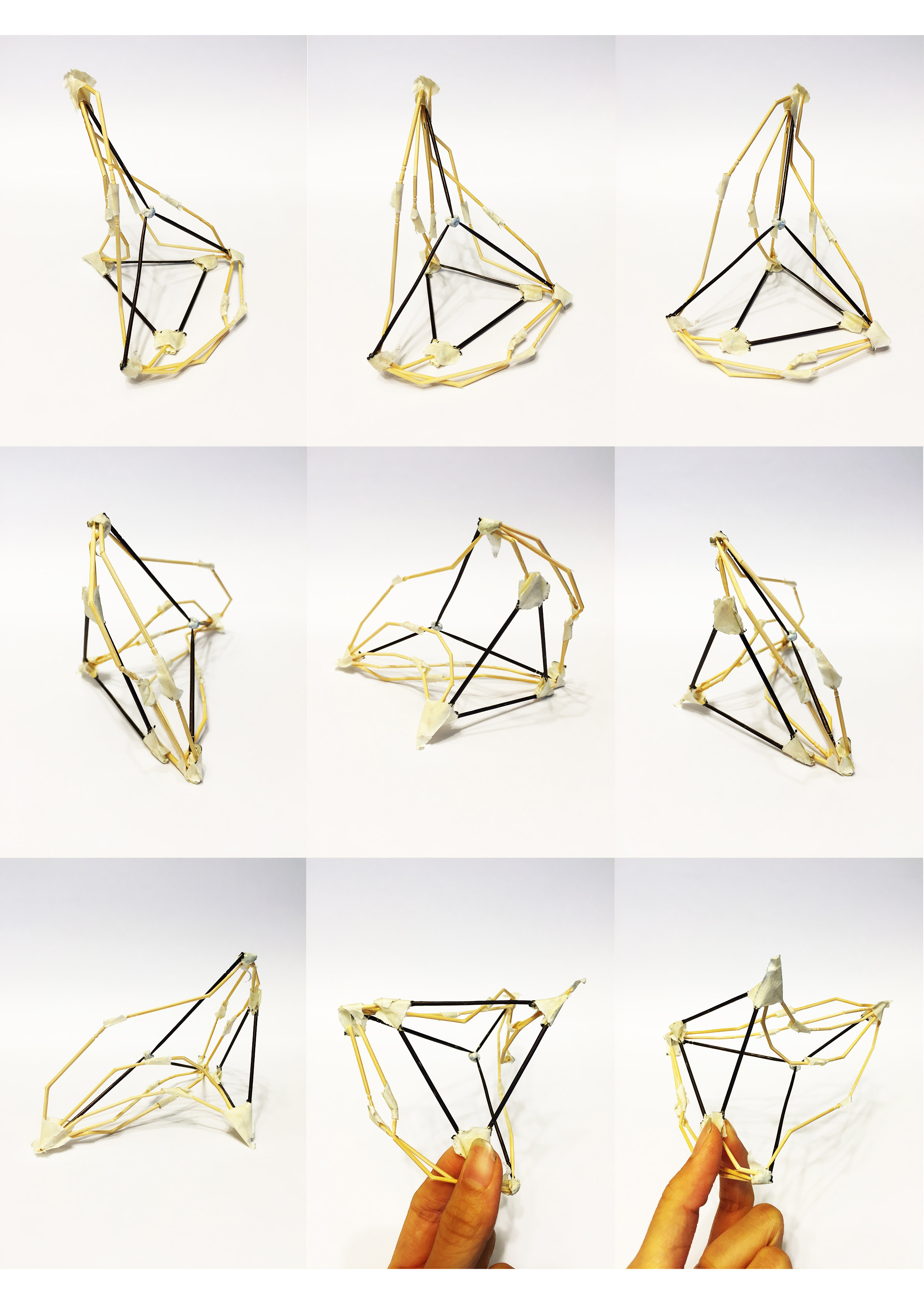 For my final, I had initially planned on putting the sticks together with hot glue gun, but I found that I liked the use of masking tape in the prototypes: the colour of the tape was harmonious with the sticks and the way they joined the sticks together at the joints conveyed this idea of “repair”, resembling the way we bandaged broken bones (once again fitting the “broken” quality I was going for). This material choice eventually led me to use masking tape to create the planes in my final as well. I created planes with masking tape to represent the “debris” and “fragments” left of the tetrahedron as it breaks apart/away. At first my placement of the planes and variation of sizes was completely spontaneous and random. However I realised that planes at certain places, particularly the area where the highest-lifted chopstick extended away, distracted/ compromised the interesting visuals the sticks alone created. Hence I removed these planes and concentrated them mainly at the bottom where the unlifted chopstick was and had them spread out increasingly in the direction that the most lifted chopstick extended (“escalation” / “peak” of breaking away motion). I quite liked the “flexibility” of the planes the tape formed: at different tautness they could be flat or curves of varying curvature. While meant to represent fragments of a larger plane broken, I found that they also felt like planes that were trying to hold the structure that was breaking away together (alluded by the “repair” bandage nature of masking tape itself).
For my final, I had initially planned on putting the sticks together with hot glue gun, but I found that I liked the use of masking tape in the prototypes: the colour of the tape was harmonious with the sticks and the way they joined the sticks together at the joints conveyed this idea of “repair”, resembling the way we bandaged broken bones (once again fitting the “broken” quality I was going for). This material choice eventually led me to use masking tape to create the planes in my final as well. I created planes with masking tape to represent the “debris” and “fragments” left of the tetrahedron as it breaks apart/away. At first my placement of the planes and variation of sizes was completely spontaneous and random. However I realised that planes at certain places, particularly the area where the highest-lifted chopstick extended away, distracted/ compromised the interesting visuals the sticks alone created. Hence I removed these planes and concentrated them mainly at the bottom where the unlifted chopstick was and had them spread out increasingly in the direction that the most lifted chopstick extended (“escalation” / “peak” of breaking away motion). I quite liked the “flexibility” of the planes the tape formed: at different tautness they could be flat or curves of varying curvature. While meant to represent fragments of a larger plane broken, I found that they also felt like planes that were trying to hold the structure that was breaking away together (alluded by the “repair” bandage nature of masking tape itself).

Final
Overall, I used my explorations of materials chosen to try to express the idea of a tetrahedron breaking away in its skeletal structure. In the creation of the final, I think I let materials (qualities and constraints) guide the outcome more, with only a loose concept in mind while working, as opposed to working by selecting materials to fit a well-developed, pre-conceived vision.
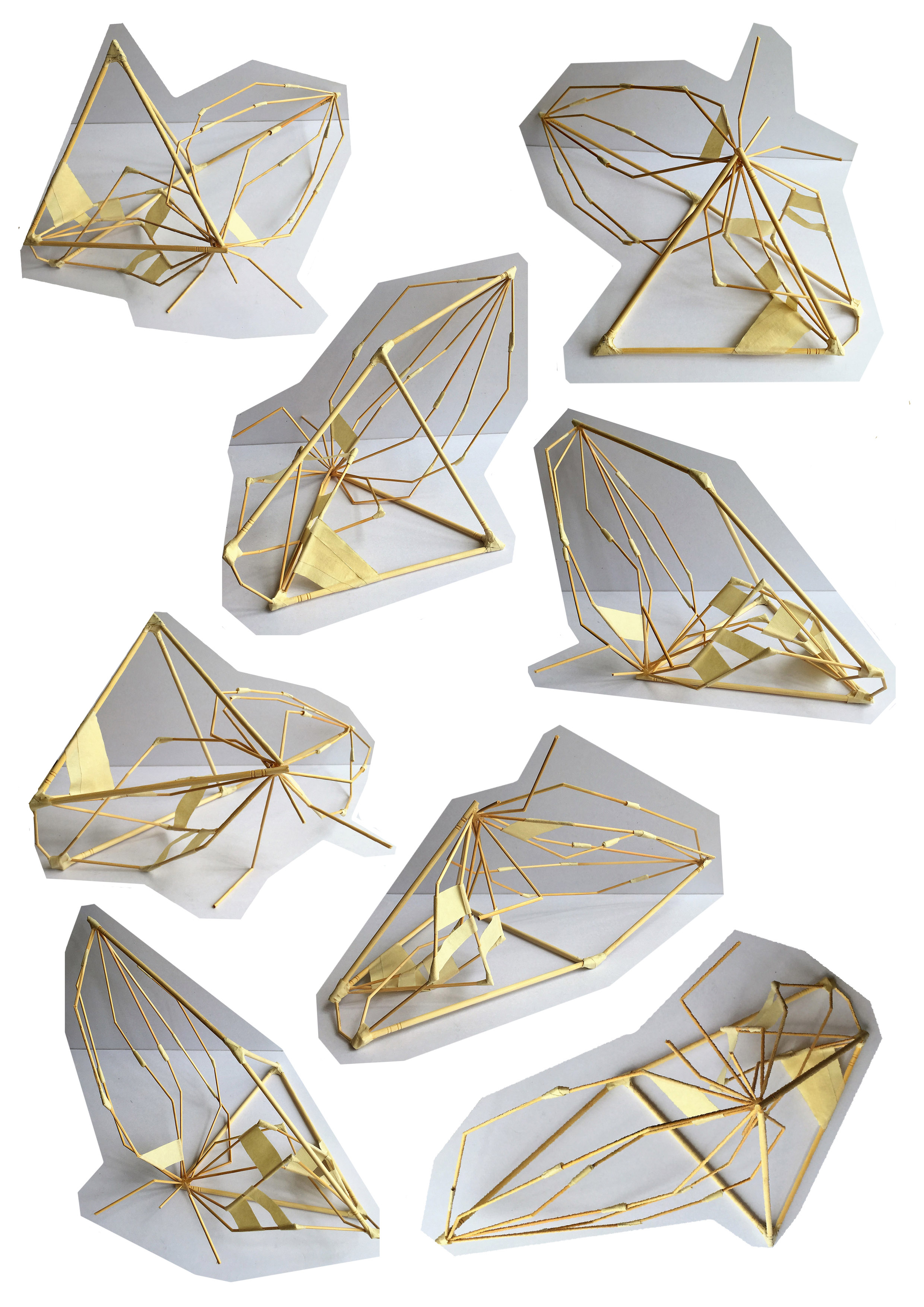
My peers gave feedback during the critique that the organic curves in my prototypes were more visually interesting than my final where the curvatures of the sticks were less pronounced and more rigid. On hindsight I agree with them and might consider returning to sticks to further explore creating organic forms out of rigid materials again (or other rigid materials).
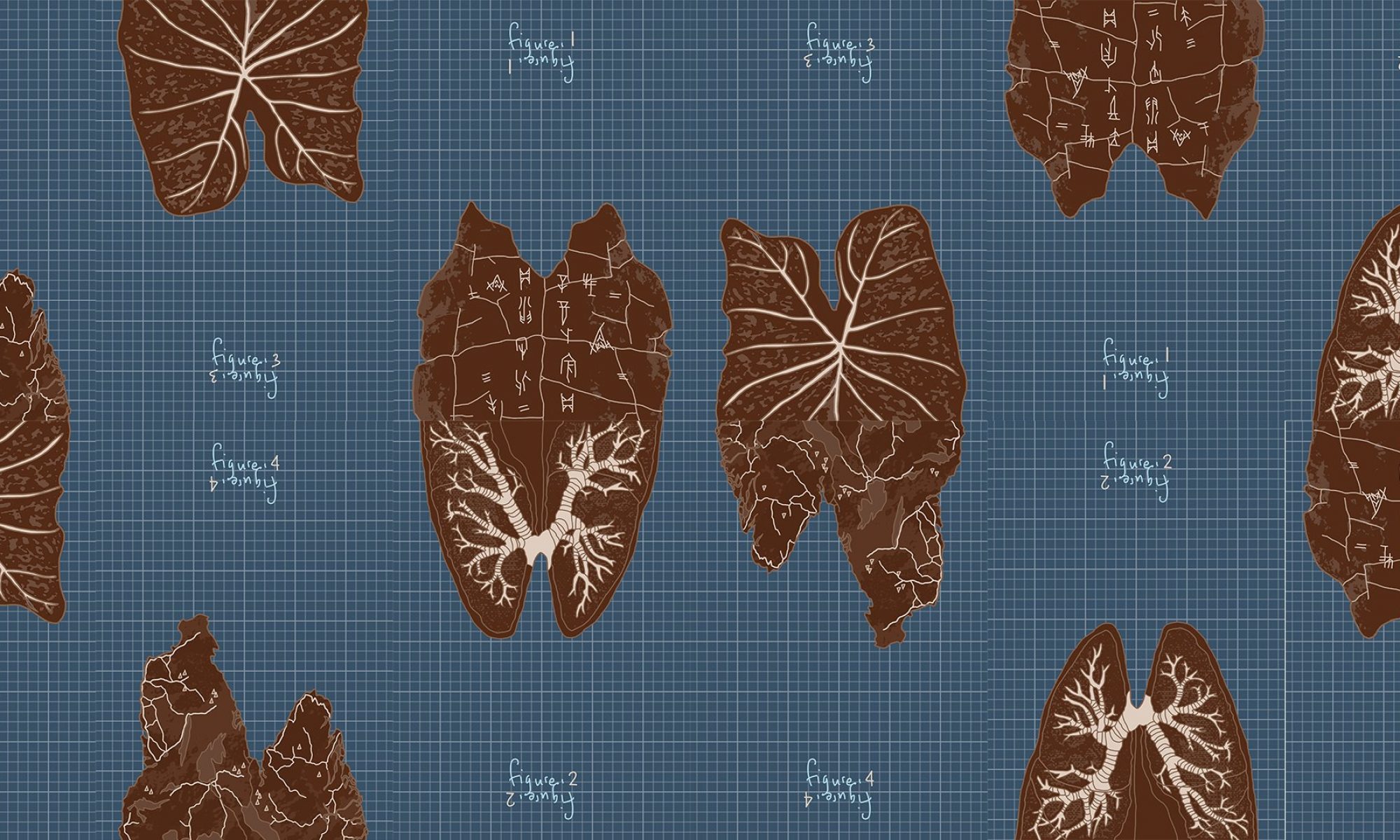

– A clear verbal presentation.
Planar Model
– This was a simple but effective composition of few planes. The positive (planes) and negative spaces in total made an varied composition all round.
Combination model
– Yours is a process driven model. The visual aesthetic is very much an intuitive one.
– Other than perhaps revisiting some of the earlier studies, the final model lacked an integrated approach to incorporating the Planar (masking tape) elements. This was somewhat of a lost opportunity to perhaps use the planes as the Dominant element (at least visually from a distance) to draw the composition together.
– There is good attempt in letting the materials drive the process and celebrate its inherent qualities, but the final model’s overall composition could have benefited from a big picture approach as well.